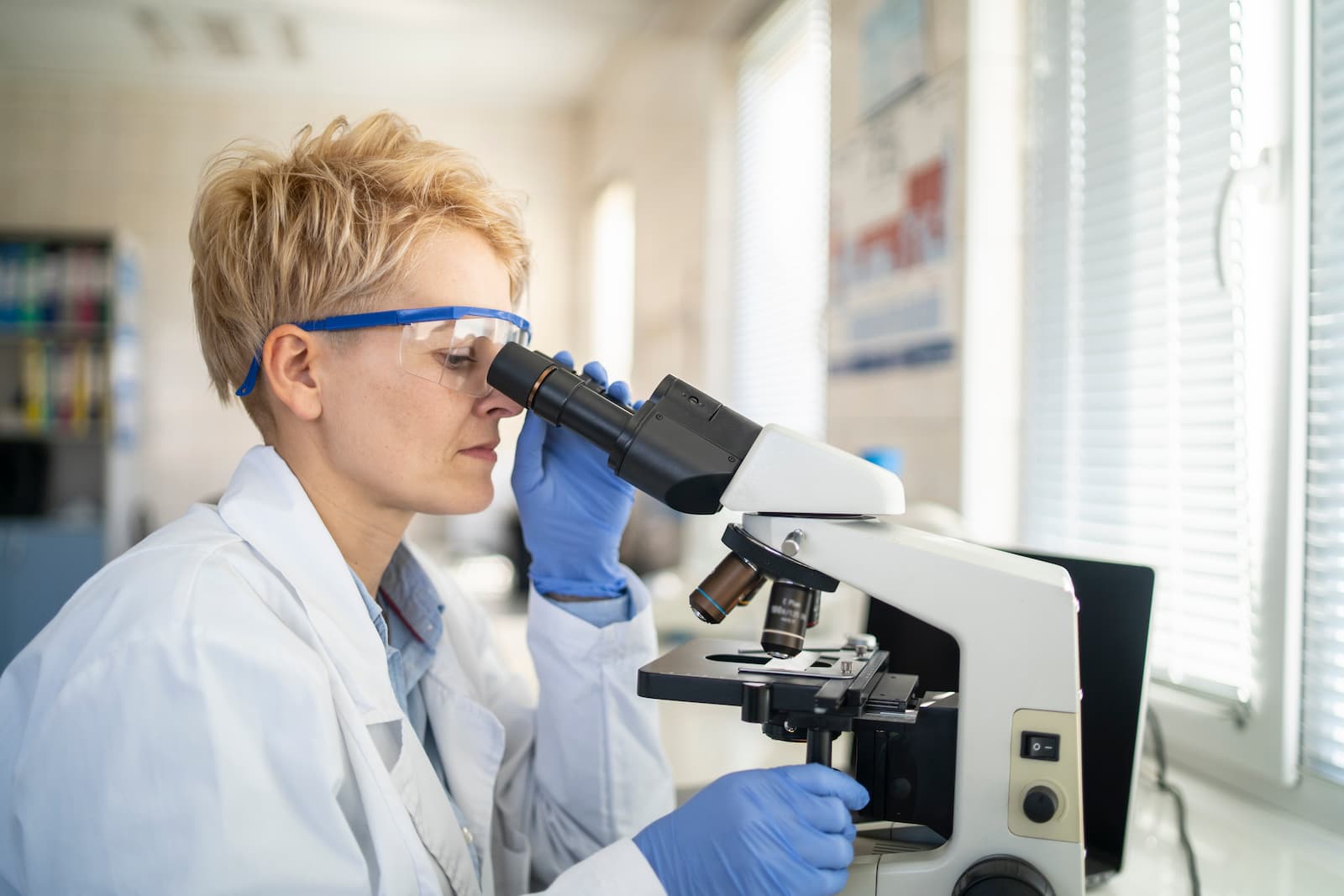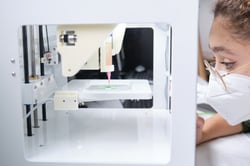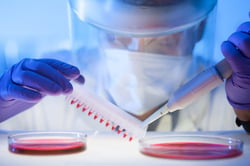Tissue engineering is the selective laboratory cultivation of tissue for therapeutic or research purposes. In the medical context, this opens up the opportunity to repair tissue damage with the body's own cell material, guaranteeing the patient highly individualized treatment on the one hand and the avoidance of rejection reactions on the other. Tissue engineering is sometimes considered a subset of regenerative medicine, although basic research and the food industry are also focusing on this topic.
Overview of content
How does tissue engineering work?
What are the areas of application for tissue engineering?
What opportunities does tissue engineering create?
What is the importance of 3D printing for tissue engineering?
What professions are involved in tissue engineering?
What skills are required for tissue engineering?
How does tissue engineering work?
Tissue engineering begins with the removal of cell material, from which tissue is then cultivated "in vitro", i.e. in a laboratory environment. If, for example, cartilage tissue is to be produced, the first step is to remove cartilage cells. These are then multiplied in a nutrient solution (or similar) under strictly defined laboratory conditions. Once a sufficient volume of tissue has grown, the material is implanted in the patient.
Wherever possible, regenerative medicine uses the recipient's own (autologous) cell material to avoid rejection. If cells are obtained from other organisms in order to grow tissue for humans, the resulting cell material is referred to in science as xenogeneic.
What opportunities does tissue engineering create?
Tissue engineering offers the chance to treat patients in a highly individualized way. This is not restricted solely to therapy using the body's own tissue, which significantly reduces the risk of rejection. Rather, it is also possible to replace exactly the tissue that is damaged without having to intervene extensively in healthy structures.
Moreover, tissue engineering creates the option of cultivating tissue that is not normally regenerative and thus cannot otherwise be replaced. One example of this are heart muscle cells, which die irreversibly in a heart attack because they no longer divide after differentiation. The same applies to nerve cells, which is why spinal cord injuries are often severe and associated with permanent paralysis.
In addition to numerous opportunities for the development of new drugs and therapies, the food industry too has high hopes for tissue engineering. The vision of researchers here is to produce meat in the laboratory and thus solve the problem of factory farming. Initial successes have been reported, but the costs are still too high for market maturity.
What are the areas of application for tissue engineering?
Tissue engineering already has practical applications in regenerative medicine. The cultivation and subsequent implantation of cartilage tissue mentioned above is perhaps the best-known example. However, blood vessels and heart valves are also already being cultivated and implanted in everyday clinical practice. The engineering of skin tissue is likewise widespread for use in reconstructive surgery or burn medicine.
The engineering of tissue from internal organs, e.g. liver, kidney or heart muscle tissue, is being intensively researched but is not yet ready for practical use. While the function of these tissues is still too complex today, this is nevertheless seen as a promising approach for the future. The same applies to prostheses that adapt perfectly to the body and even grow with it.
Basic scientific research is also focusing on tissue engineering, with studies being conducted into cellular growth processes, cell communication and the effect of drugs, for example. At the same time, intensive research is being conducted into the cultivation of meat in food production.



